Introduction to Conducted Emissions of EMC
The conducted emissions (CE) test is a common test item in the EMC test. As a field application engineer at MORNSUN POWER, I'm pleased to share what I know about EMC knowledge with engineers, and sincerely hope it will help with the power supply design of your system.
1. Electromagnetic compatibility (EMC)
First, let's take a look at what EMC is. The full name of EMC is electromagnetic compatibility, which refers to the ability of equipment or system to work normally in its electromagnetic environment and not to produce intolerable electromagnetic interference to any other equipment in its environment. In daily life, thunder and static electricity can be seen everywhere. At ordinary times, common electronic equipment and natural phenomena will produce electromagnetic interference. How to make electronic equipment work normally in such a complex electromagnetic environment without affecting the surrounding electromagnetic sensitive equipment is the EMC we want to research.
EMC is composed of EMI(Electromagnetic Interference) and EMS(Electromagnetic Susceptibility), as shown in Figure 1. EMI refers to external disturbance generated by equipment, mainly including conducted emissions, radiated emissions and other test items. EMS refers to the anti-interference ability of the equipment itself, mainly including surge, EFT, ESD and other test items.

Figure 1
2. Conducted emissions (CE)
Conducted emissions is a test item in electromagnetic interference (EMI), which reflects the interference of electronic products to the power grid through cables.
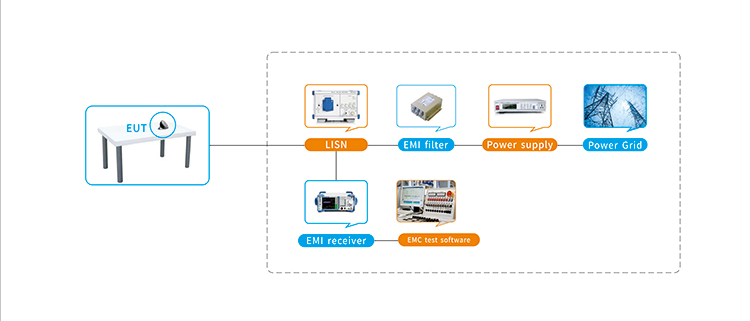
Figure 2
2.1 Test equipment
As shown in Figure 2, this is the equipment schematic diagram of the conducted emissions test project, and EUT represents the product to be tested. LISN is a test coupling network, the receiver is a test receiver.
Taking CISPR32 as an example, the internal schematic diagram of LISN is shown in Figure 3. The power supply supplies power to EUT through the input filtering large capacitance C1 and the filtering inductance in LISN. However, the high-frequency noise generated during the operation of EUT is coupled to a matching impedance of 50 ohms through a small capacitor C2 and is captured by the receiver.
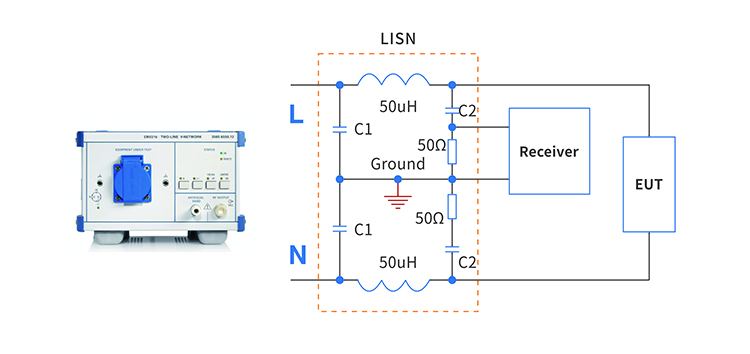
Figure 3
2.2 Determination procedure
We can judge the measurement results of conducted emissions through the judgment flow chart in Figure 4. Of course, it's complicated to understand in this way. Therefore, the judgment conditions in Figure 4 are interpreted as follows.
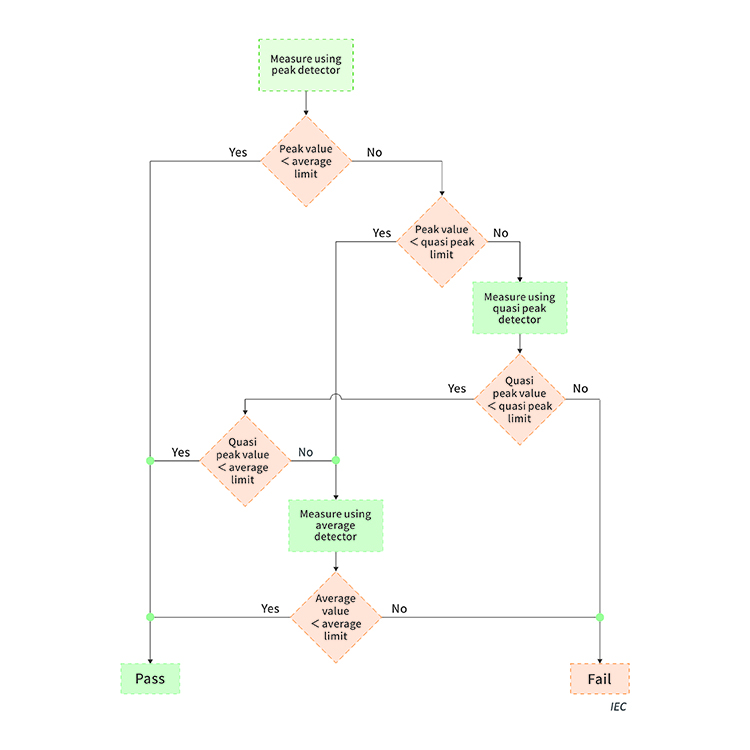
Figure 4
A. The final judgment method
When (quasi peak value < quasi peak value limit) & (average value < average value limit), if the above conditions are met together, the conducted emissions result is judged as qualified.
However, as we all know, the quasi peak measurement takes a long time. In order to shorten the determination time, we can choose other measurement methods with shorter test time.
Let's first learn several basic relationships, as shown in Figure 5. The peak value is greater than the quasi peak value, and the quasi peak value is greater than the average value; in addition, the quasi peak value limit is higher than the average value limit.
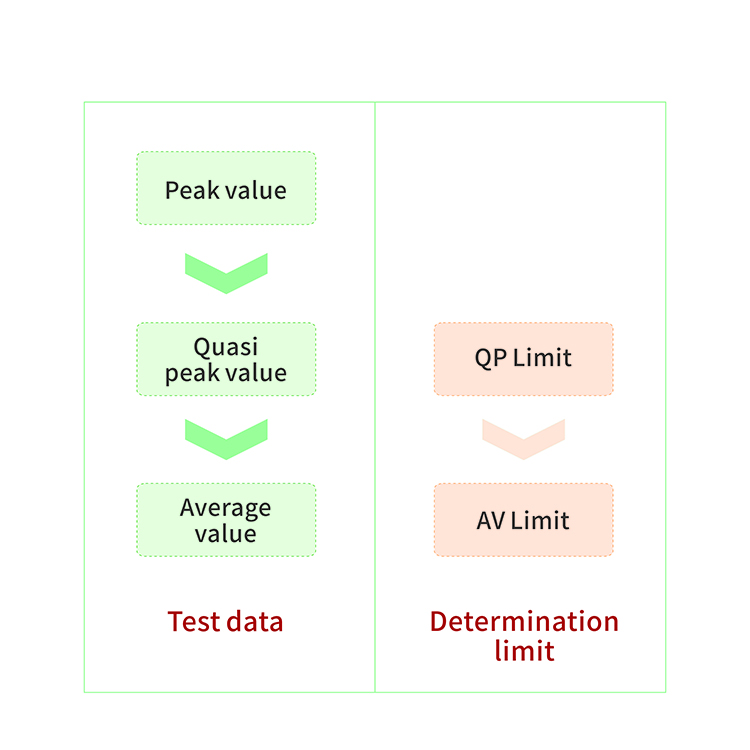
Figure 5
B. Fast judgment method
In case one, when the peak value is less than the average value limit, we directly determine that the conducted emissions are qualified.
In case 2, the peak value is greater than the average value limit but less than the quasi peak value limit; and the average value is less than the average value limit. If the above conditions are met, we can also judge that the conducted emissions are qualified.
2.3 Example of judgment
For example, as shown in Figure 6, let's use the above judgment flow chart to judge. The average test results of the green waveform are all less than the green average limit line, and the peak test results of the blue waveform are less than the red quasi peak limit line. Therefore, the judgment result is qualified.
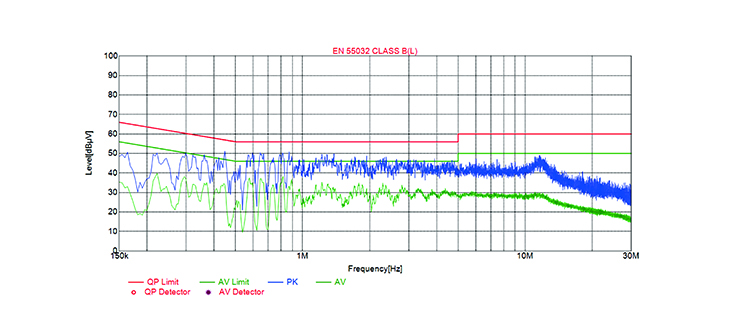
Figure 6
As shown in Figure 7, from the data point of view, it failed the ClassB test. Because the green waveform exceeds the green average limit line by 1.18db at the frequency of 1.4MHz, the result can be directly judged as a failure.
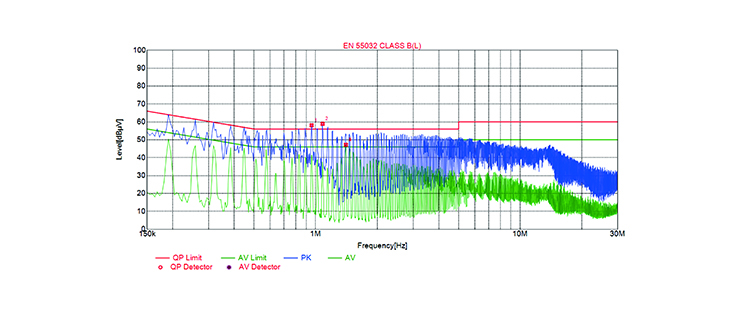
Figure 7
Conclusion
It can be seen that through the rapid determination method, as long as the measurement results of peak value and average value are compared with the quasi peak value limit and average value limit, we can quickly judge the test results of conducted emissions.
Have you learned it? Come and practice it!
At MORNSUN, we have broad portfolio covers multiple power ranges and includes AC-DC converter, DC-DC converter, transceiver module, and SiC/GaN driver power supply, etc. All of these products feature compact size, high power density, excellent EMC performance, reliable technical specifications and leading efficiency. If you are looking to design a power supply for your system with ease, then MORNSUN has the solutions for you. For more information, please visit www.mornsun-power.com.






